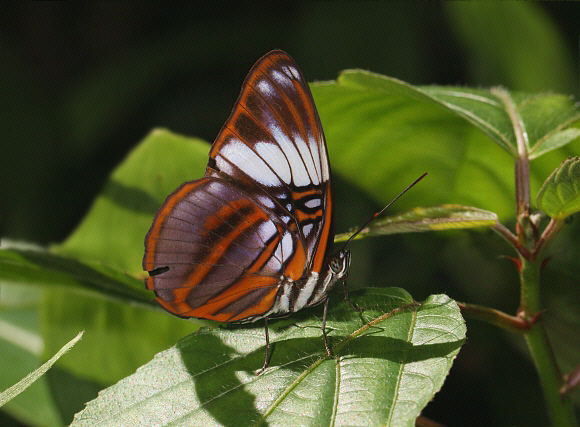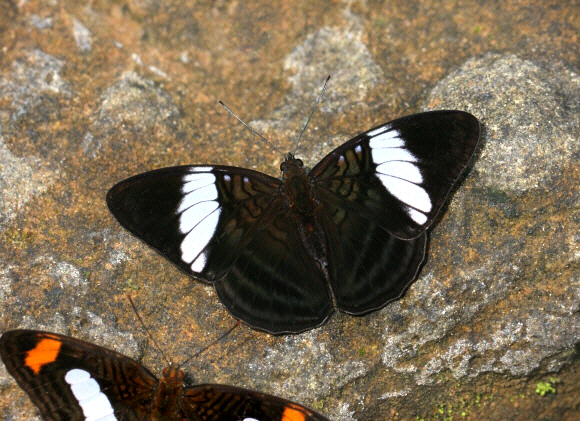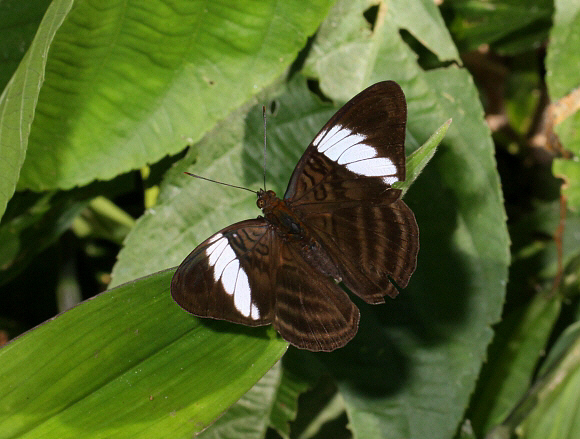
Introduction
Adelpha butterflies are colloquially known as ‘Sisters’. In terms of appearance they are reminiscent of the White Admirals ( Limenitis ) of Eurasia, and share with them a fondness for flitting gracefully around the lower branches of trees in the dappled sunlight of the forest.
There are 85 known species of Adelpha, all except two of which are confined to Central and South America. They are characterised by the distinctive black marbled pattern overlaid on a dark brown ground colour; and by having a broad orange or white band on the forewings. In the vast majority of species this band also extends vertically down to the tornus of the hindwings.
Adelpha epione is a common and widespread butterfly, found from Colombia to Bolivia.

Habitats
This is a common species of pre-montane rainforest habitats, where it occurs at elevations between about 400-1200m.
Lifecycle
The eggs are white, and laid singly on the foliage of the foodplants, although several females may oviposit on the same plant. In Costa Rica the larvae are laid on Sabicea villosa, but it is likely that other species of Rubiaceae are also used, there and elsewhere in the butterfly’s range. The larvae are dark brown, with a double row of rosetted spines along the thoracic segments, those on the first two segments being enlarged and directed forward, while the third pair are directed backward.
The abdominal segments are covered in shorter bristle-like spines. When young the larvae rest on frass chains, constructed by depositing droppings along the midrib of a leaf, gluing them together with silk and fragments of dead plant material. The chain usually projects beyond the leaf tip. Older larvae rest on the upper surface of a half-eaten leaf. The pupae, which are suspended by the cremaster, are pale brown, decorated with spikes and other projections, and have a bifid head.
Adult behaviour
The butterflies are usually encountered singly. Males will imbibe mineralised moisture from damp soil, boulders, sandy river beaches or from aphid secretions on foliage.

